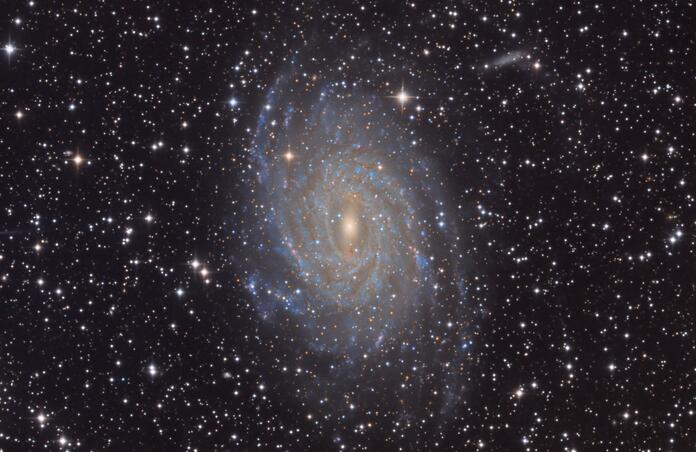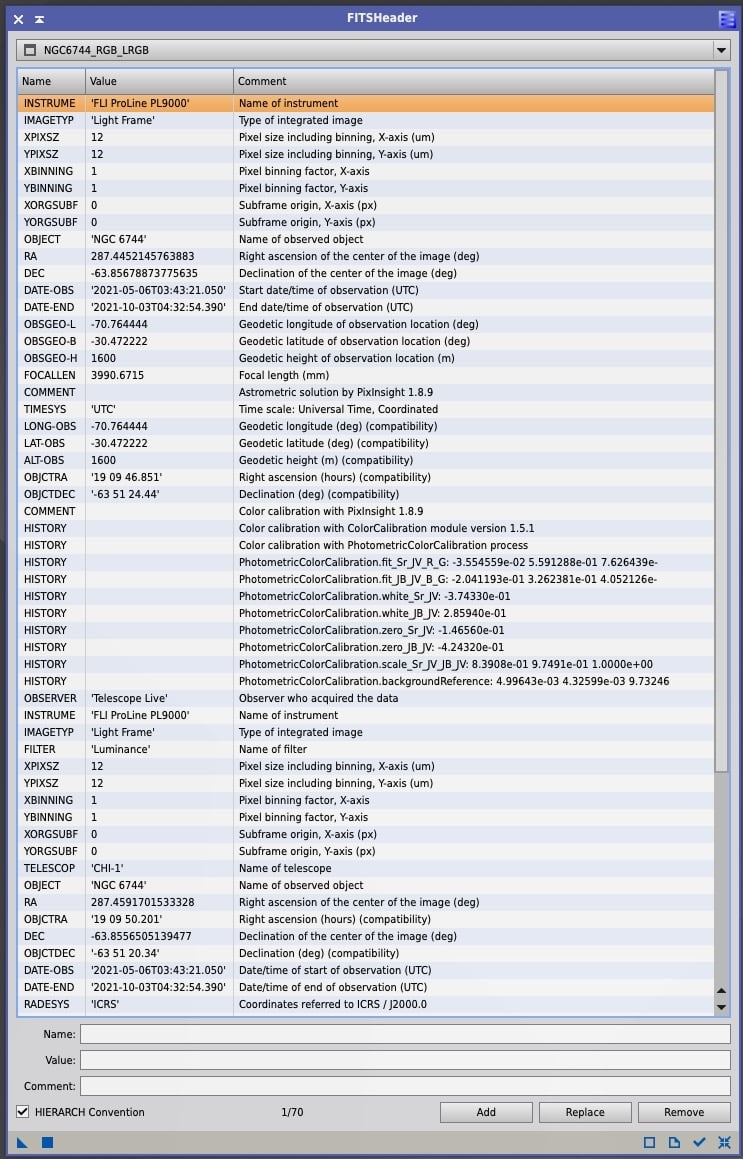Astro Image File Formats

Digital images are created with standardized digital file formats that have been advocated and agreed upon by groups of users (such as us astro imagers) to be able to organize, store and share the content of these files easily. The Flexible Image Transport System, otherwise known as FITS is the standard digital file format for astro imagers and is endorsed by NASA.
While many different digital file formats have been developed for quite some time, all of them (including FITS) share some basic characteristics:
- identification so that any software identifies the file as meeting a particular image standard.
- file header information that tells the software the particular characteristics of the file, such as how the image is organized, colour or grayscale, the pixel array, etc.
- Additional information such as location information, date and time of the image.
Some of the more common digital file formats are:
- Tagged Image File Format (TIFF), used in the graphics, publishing and printing industries.
- BMP - a native format developed by Microsoft for Windows.
- Joint Photographic Experts Group (JPEG) is a compressed format specifically to post images to the internet.
- RAW, NEF, and CRW are the proprietary formats of the raw data from digital cameras.
FITS was developed as a standard when astronomers at the Kitt Peak National Observatory began dealing with digital imaging data from several different sources, including the Very Large Array radio telescope and CCD cameras. It is designed to be very user friendly and consists of 3 parts; the file’s header, the image data itself and a tailer. The image data is binary data in precise binary formats and the tailer information is there to add extra bytes to pad the file to a standard length which is a multiple of 2,880 bytes. The reason for the tailer goes back to when computer file data was stored on magnetic tape and they had to contain an integral number of records; it’s now mandatory because all FITS files need to conform to the FITS standard.
In PixInsight, you can view the information contained in the FITS file header. I’ve attached an example of for the image I’ve posted here of NGC 6744. You can begin to see the amount of information contained in the FITS file header. This can be very valuable when you run into problems with an image and need additional information to understand what may be happening and how to address the problem. You also have the option at least in PixInsight to directly correct any data in the FITS header that may be wrong and causing you a lot of grief when you’re trying to process the files to create the final image.
Stay safe, have a lot of fun if you decide to go after these targets, get your neighbors to turn off their lights at night and convince them to join in the fun….

References
The Handbook of Astronomical Image Processing, 2nd Edition; Richard Berry, James Burnell; Willmann-Bell Inc. Publishers
Image Credits
NGC 6744; Telescope Live 1-Click Bundled Observation LRGB Data using CHI-1 & Processed in PixInsight
This blog post was originally published in our Telescope Live Community.
The Community represents Telescope Live's virtual living room, where people exchange ideas and questions around astrophotography and astronomy.
Join the conversation now to find out more about astrophotography and to improve your observation and post-processing skills!
